Estimated reading time: 10 minutes
In baking, two common ingredients, baking soda, and baking powder, play a crucial role in achieving that perfect rise and texture. In this post, we'll explore the differences between these leavening agents, their unique properties, how to use in vegan baking, and when to use each one.
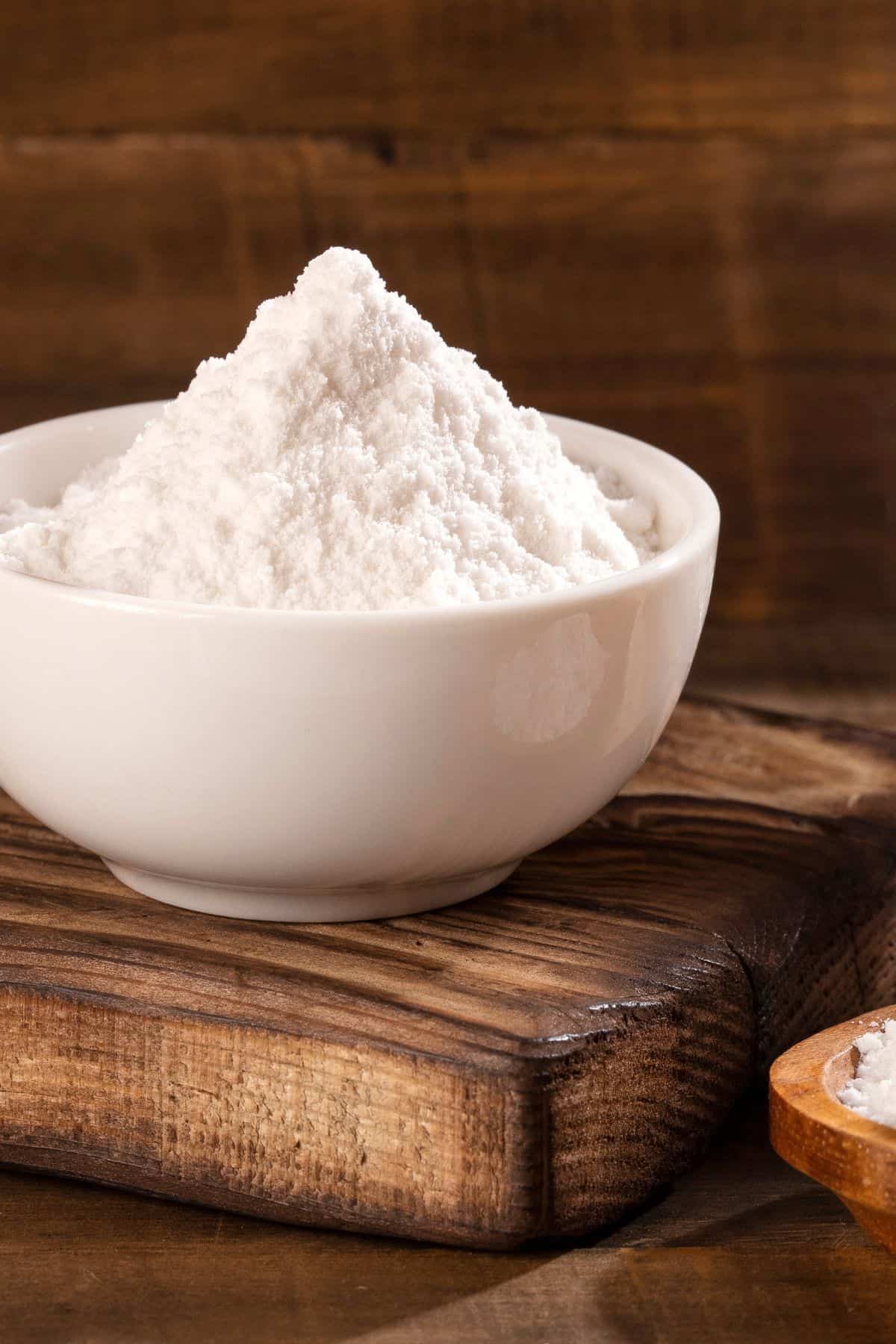
Jump to:
The Basics of Baking Soda and Baking Powder: What Are They?
In the world of baking and cooking, understanding the fundamental differences between baking soda and baking powder is essential. These two leavening agents might look similar, but they serve distinct purposes in recipes, making them indispensable tools for any home chef or baker.
Baking Soda (Sodium Bicarbonate)
Chemical Composition: Baking soda is a pure chemical compound called sodium bicarbonate. Its chemical formula is NaHCO3.
Activation: Baking soda requires an acidic ingredient to become activated. When it encounters an acid (like vinegar, lemon juice, or yogurt) in a recipe, it produces carbon dioxide gas, which causes the batter or dough to rise. This reaction gives your baked goods their characteristic lift and airy texture.
Flavor Profile: Baking soda can have a slightly salty or metallic taste if used in excess. Therefore, it's important to use it sparingly and in the right proportions.
Baking Powder
Chemical Composition: Baking powder is a mixture of several ingredients, including baking soda (sodium bicarbonate), an acid (usually cream of tartar), and a starch (usually cornstarch). These components are carefully balanced to provide both acidic and alkaline reactions.
Activation: Baking powder is more versatile than baking soda because it contains both an acid and a base. There are two types of baking powder: single-acting and double-acting.
Single-acting baking powder activates as soon as it comes into contact with a liquid, while double-acting baking powder has a second reaction when exposed to heat. This means that recipes using baking powder often have a bit more leeway in terms of when you can bake the batter or dough.
Flavor Profile: Baking powder typically adds no noticeable flavor to your baked goods, making it a neutral leavening agent.
Choosing the Right Leavening Agent
When to Use Baking Soda
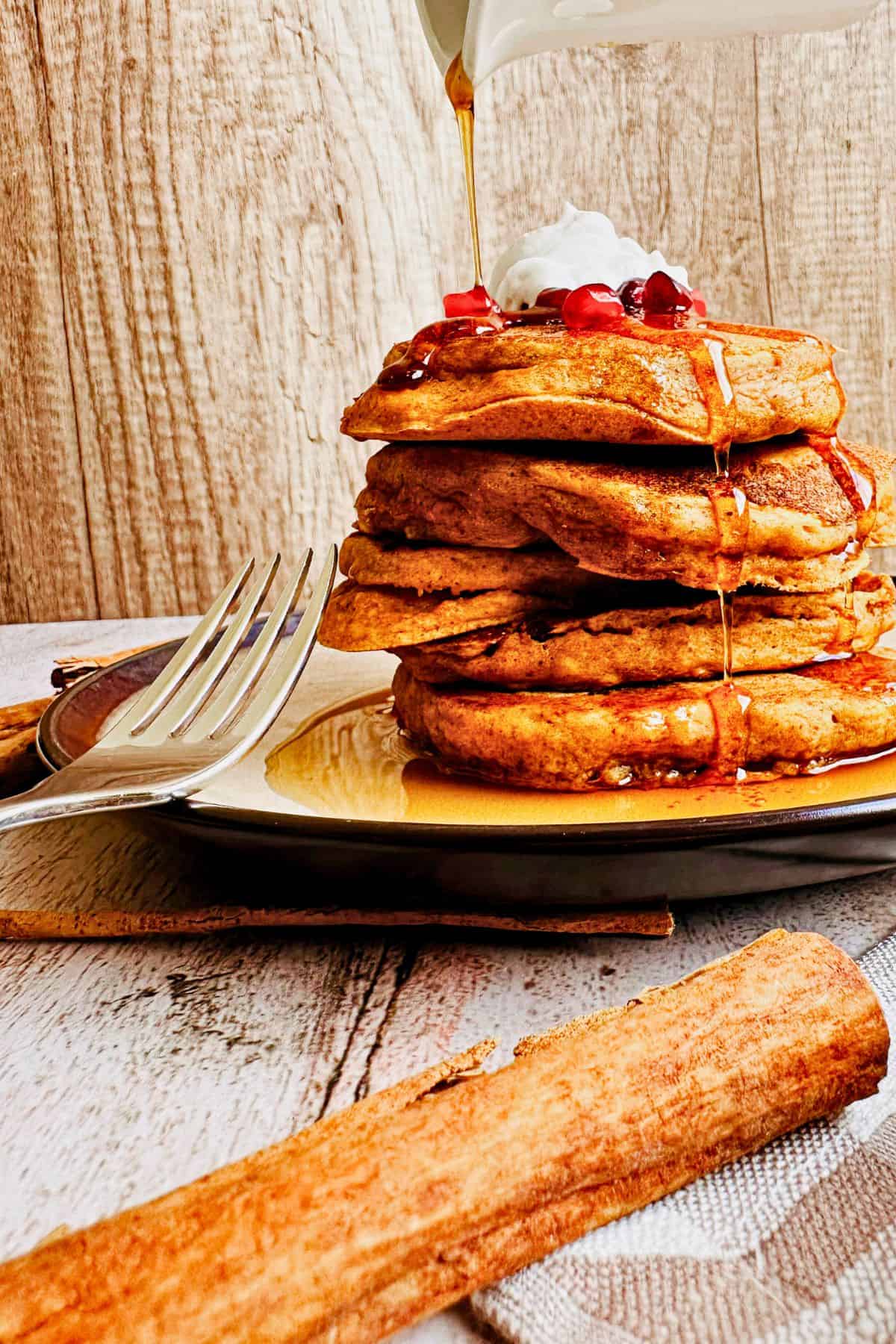
Baking soda is a powerful leavening agent with a distinct purpose, and knowing when to use it can make a significant difference in your baking endeavors. So let's talk about when to use baking soda in your recipes.
Recipes with Acidic Ingredients
One of the key characteristics of baking soda is its need for an acidic ingredient to activate its leavening properties. Here are some instances when you should reach for baking soda:
- Vegan Buttermilk Pumpkin Pancakes: Baking soda works wonders in buttermilk pancake recipes. The acidity of the buttermilk reacts with the baking soda, resulting in fluffy and light pancakes with a slightly tangy flavor.
- Vegan Double Chocolate Crinkle Cookies: Some cookie recipes call for baking soda because the brown sugar in the dough acts as an acidic component. This interaction produces cookies with a chewy texture and a slightly caramelized flavor.
- Vegan Banana Bread With Walnuts: Ripe bananas contain natural acids, and combining them with baking soda creates a chemical reaction that leavens the bread, making it moist and airy.
- Cocoa-Based Desserts: Baking soda complements cocoa powder's acidity in chocolate cakes, brownies resulting in a rich and tender crumb.
Savory Baking
While baking soda is often associated with sweet treats, it has its place in savory baking, too. Consider using it in:
- Soft Pretzels: Baking soda is used in the boiling water bath for pretzels. This step helps achieve the classic pretzel crust and distinctive flavor.
- Irish Soda Bread: As the name suggests, this bread relies on baking soda for leavening. The reaction between baking soda and the acidic buttermilk creates the bread's characteristic texture.
- Vegan Cornbread: Baking soda can be used alongside acidic ingredients like buttermilk or yogurt in recipes, resulting in a moist and slightly tangy cornbread.
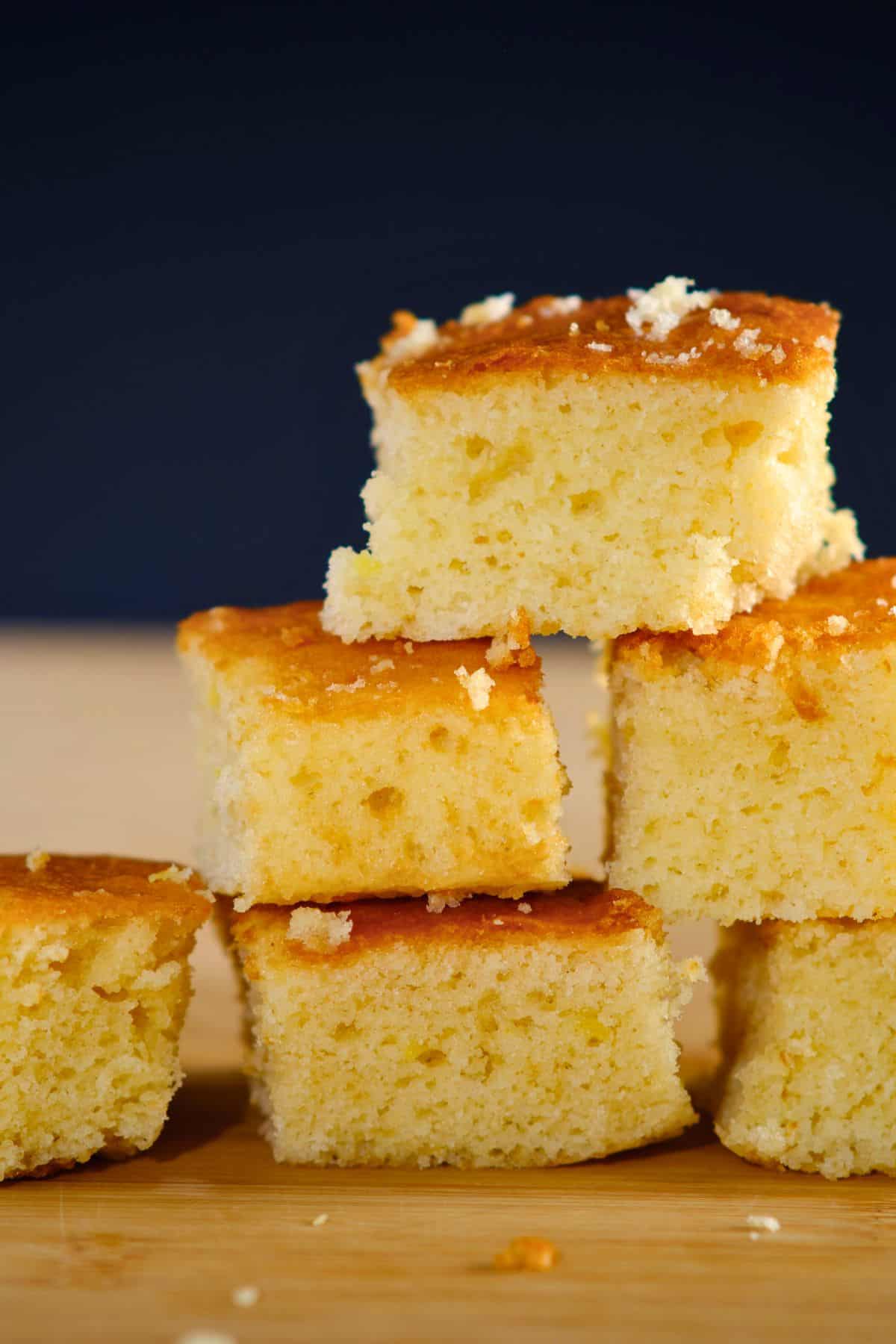
Recipes Where a Strong Rise is Needed
In recipes where you want a quick and strong rise, baking soda is an excellent choice. It produces carbon dioxide gas rapidly, which can create a lighter texture. Examples include:
- Fluffy Pancakes: If you prefer thick and fluffy pancakes, using baking soda with an acidic component like buttermilk is the way to go.
- Quick Breads: Some quick bread recipes, like zucchini bread, benefit from the immediate rise provided by baking soda.
- Cookies with a Cakey Texture: If you want your cookies to have a cake-like texture, baking soda can help achieve that soft and puffy result.
When to Use Baking Powder
Baking powder can be used in a variety of recipes where you want a gradual and controlled rise. Here are some situations when you should reach for baking powder:
Recipes Without Acidic Ingredients
Baking powder is an excellent choice in recipes that don't naturally contain acidic components. It provides the necessary acidity through its cream of tartar content, allowing the batter or dough to rise effectively. Some examples include:
- Simple Vegan Pancakes: If you're making classic pancakes without buttermilk or yogurt, baking powder will provide the rise and tenderness you desire.
- Fluffy Waffles: Waffle recipes often use baking powder to achieve a light and crisp texture.
- Cakes: Most cake recipes rely on baking powder to create a fluffy, tender crumb. Whether it's a simple vanilla cake or a rich chocolate cake, baking powder is a key ingredient.
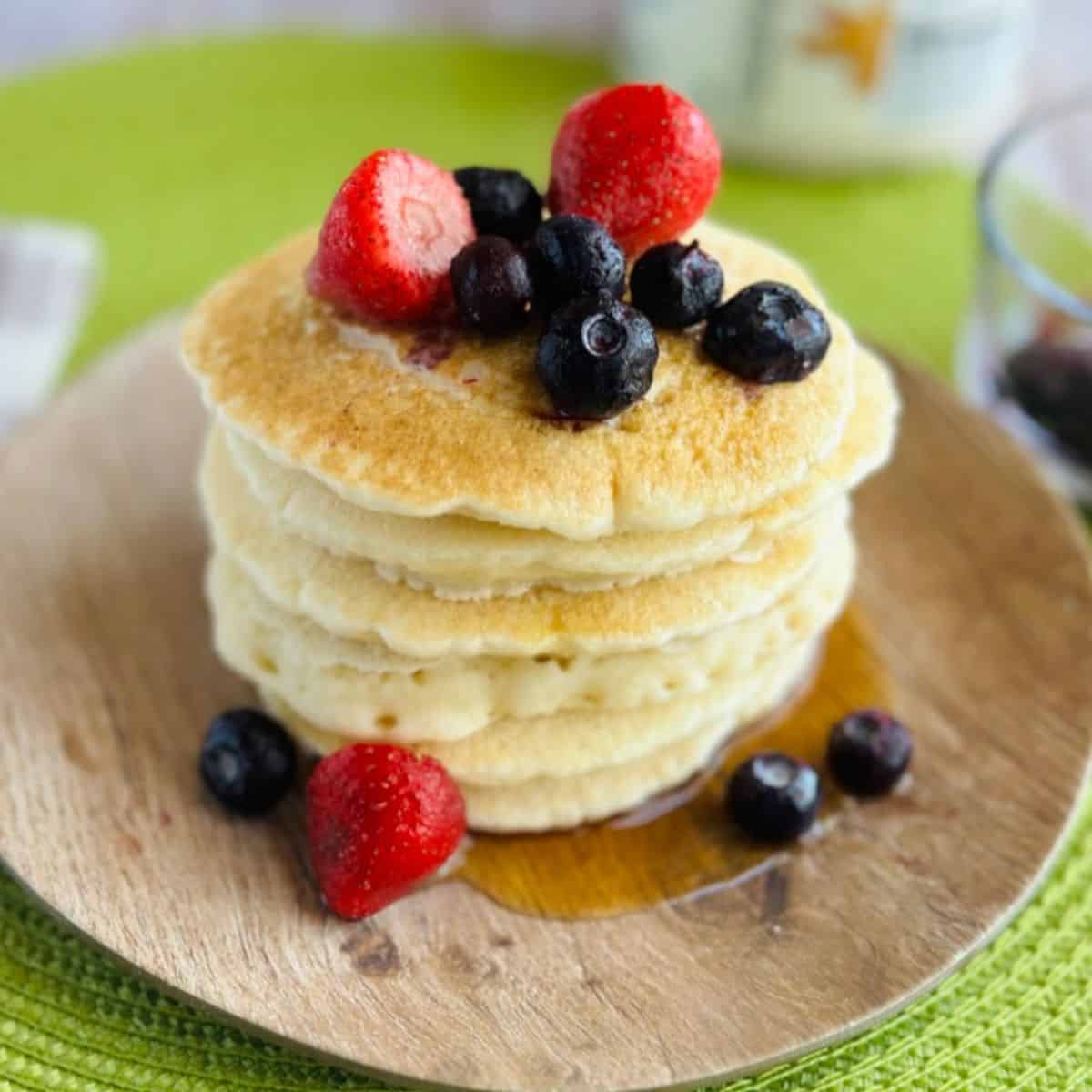
Recipes Where a Gradual Rise is Preferred
Baking powder's double-acting nature provides a more gradual and extended release of carbon dioxide gas. This can be beneficial in recipes where you want a consistent and controlled rise:
- Muffins: Baking powder is commonly used in muffin recipes like these Savory Vegan Zucchini Muffins, resulting in a tender, domed top and a moist interior.
- Quick Easy Vegan Biscuits: Baking powder is essential for achieving the flaky, buttery layers that make biscuits irresistible.
- Scones: Baking powder helps scones rise while maintaining a delicate crumb structure.

When You Want a Neutral Flavor
Baking powder typically doesn't impart any noticeable flavor to your baked goods, making it an excellent choice when you want the ingredients' natural flavors to shine through. This neutrality is especially important in recipes where the leavening agent shouldn't alter the taste:
- Shortbread Cookies: Baking powder can be used in shortbread recipes to create a delicate, crumbly texture without interfering with the buttery flavor.
- Pie Crusts: Some pie crust recipes incorporate baking powder for a slight lift and tenderness without affecting the crust's taste.
Recipes That Allow for Preparing the Batter in Advance
Since double-acting baking powder has a delayed reaction when exposed to heat, you can prepare the batter or dough in advance without worrying about losing its leavening power. This can be convenient for recipes that benefit from a resting period before baking:
- Pancake or Waffle Batter: You can mix the batter ahead of time and cook the pancakes or waffles later without sacrificing fluffiness.
- Bread Dough: Some bread recipes using baking powder allow for a resting period before baking, enhancing the dough's texture.
Baking Powder and Baking Soda in Vegan Baking
In vegan baking and cooking, using baking powder and baking soda is the same to their use in non-vegan recipes. However, there are some considerations and tips that can help you get the best results:
- Acidic Ingredients: Since baking soda requires an acidic component to activate its leavening properties, consider using plant-based options like apple cider vinegar, lemon juice, soy yogurt, or almond milk mixed with a touch of vinegar in your recipes. These ingredients will provide the necessary acidity for baking soda to work effectively in vegan dishes.
- Egg Replacements: In vegan baking, where eggs are often replaced with plant-based alternatives like flax eggs (ground flaxseeds mixed with water), mashed bananas, or applesauce, the leavening agents play a crucial role in providing structure and rise. Adjust the quantities of baking powder and baking soda based on your specific egg substitute and recipe requirements.
- Avoid Overmixing: Just like in non-vegan baking, be cautious not to overmix your vegan batter or dough when incorporating leavening agents. Overmixing can lead to dense and tough results.
- Pay Attention to Ratios: Vegan recipes may require different ratios of baking powder and baking soda than non-vegan ones due to ingredient variations. Always follow the recipe's instructions closely for the best outcomes, or if you are creating your own, you may need to play around with quantities.
- Vegan Buttermilk: To mimic buttermilk in vegan recipes, combine plant-based milk (like almond or soy) with a small amount of acid, such as apple cider vinegar or lemon juice. Let it thicken for a few minutes, and create a vegan "buttermilk" for your recipes.
- Double-Acting Baking Powder: Vegan recipes may benefit from double-acting baking powder, which has both fast-acting and slow-acting components. This can help achieve a consistent rise in vegan baked goods.
How to Substitute One for the Other: In a Pinch
Remember that while these substitutions can work in a pinch, it's always best to use the leavening agent specified in your recipe for the most consistent results.
Substituting Baking Soda for Baking Powder
If your recipe calls for baking powder but you only have baking soda on hand, you can make the substitution by using the following formula:
Replace 1 teaspoon of baking powder with ¼ teaspoon of baking soda plus ½ teaspoon of cream of tartar.
Here's a breakdown of the process:
- Measure out the amount of baking soda and cream of tartar specified in the substitution formula.
- Mix the baking soda and cream of tartar thoroughly. This creates a homemade baking powder substitute.
- Use this mixture in your recipe as you would use regular baking powder.
Substituting Baking Powder for Baking Soda
If your recipe calls for baking soda, and you only have baking powder, you can make the substitution with the following rule:
Replace 1 teaspoon of baking soda with 3 teaspoons (1 tablespoon) of baking powder.
Common Mistakes to Avoid
Let's delve into common mistakes to avoid when it comes to using and storing baking soda and baking powder:
- Overusing Baking Soda or Baking Powder: Overusing baking soda or baking powder in your recipes can lead to unwanted results, such as an off-putting taste and texture. Here's what to watch out for:
- Measuring Errors: Using too much or too little of these leavening agents can disrupt the balance in your recipe. Be sure to measure them accurately. It's best to use a kitchen scale for precise measurements, but if you don't have one, use leveled measuring spoons.
- Not Adjusting for Recipe Size: If you're scaling a recipe up or down, adjust the baking soda or baking powder amount accordingly. The ratio should remain consistent with the original recipe.
- Avoiding the "More Is Better" Mindset: Thinking that extra-leavening agents will yield fluffier results is a common misconception. It can actually lead to an unpleasant metallic or soapy flavor in your baked goods.
Storing Them Incorrectly
Improper storage of baking soda and baking powder can render them less effective over time. Here's how to ensure they stay fresh:
- Moisture Exposure: Baking soda and baking powder are hygroscopic, which means they absorb moisture from the air. Store them in airtight containers to prevent clumping and maintain their potency.
- Keep Away from Heat: Avoid storing these leavening agents near the stove or in direct sunlight, as exposure to heat can diminish their effectiveness.
- Check Expiration Dates: Both baking soda and baking powder have a shelf life. Check the expiration date on the packaging and replace them if they are past their prime.
- Test for Freshness: If you're unsure about the freshness of your baking soda or powder, perform a simple test. To check baking soda, add a few drops of vinegar to a small amount; if it fizzes vigorously, it's still active. Mix a small amount of baking powder with water; if it bubbles and fizzes, it's good to use.


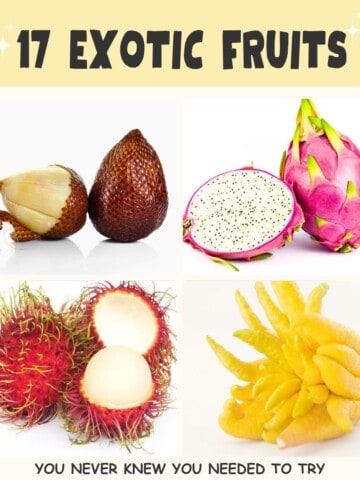


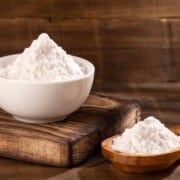
Comments
No Comments